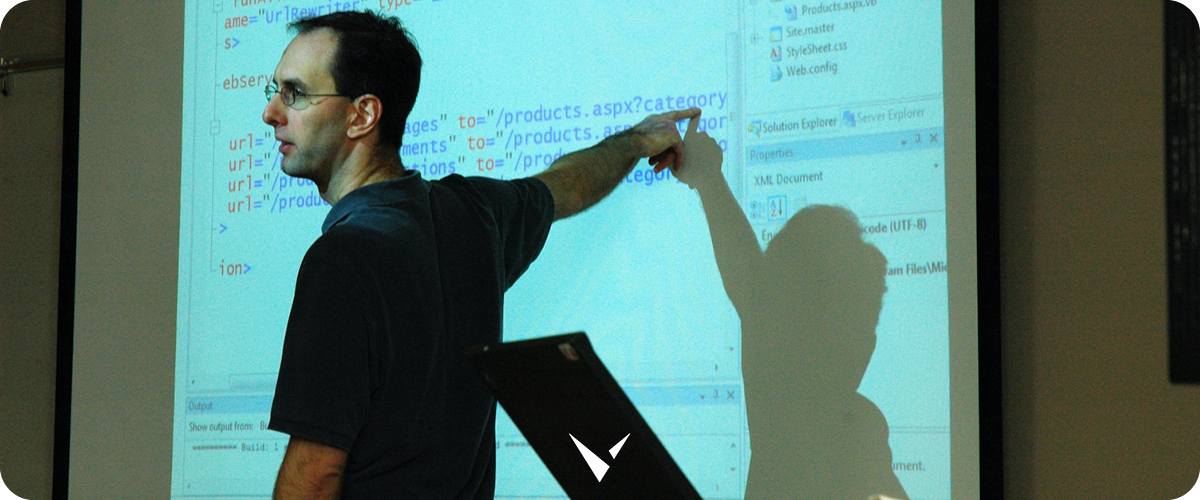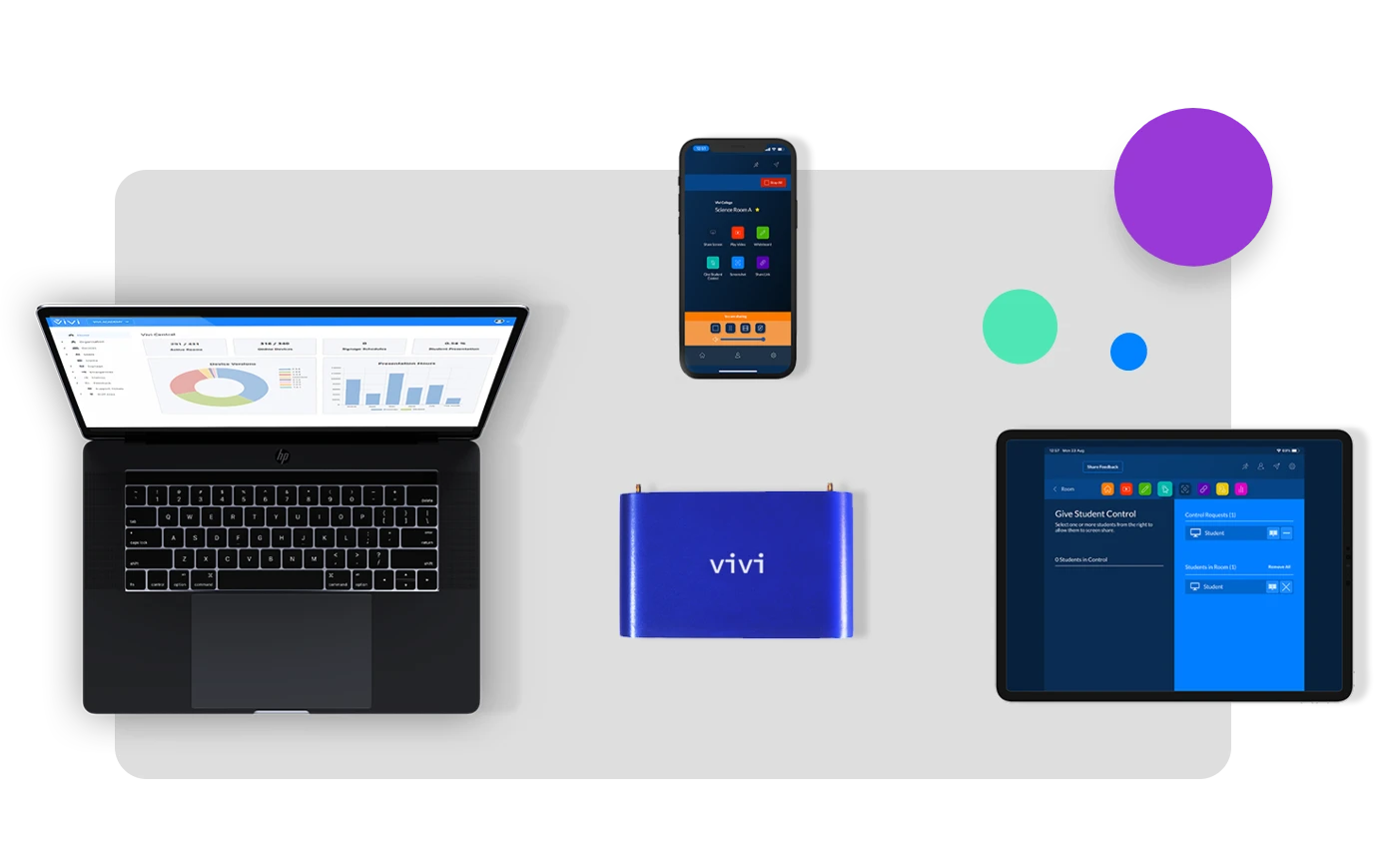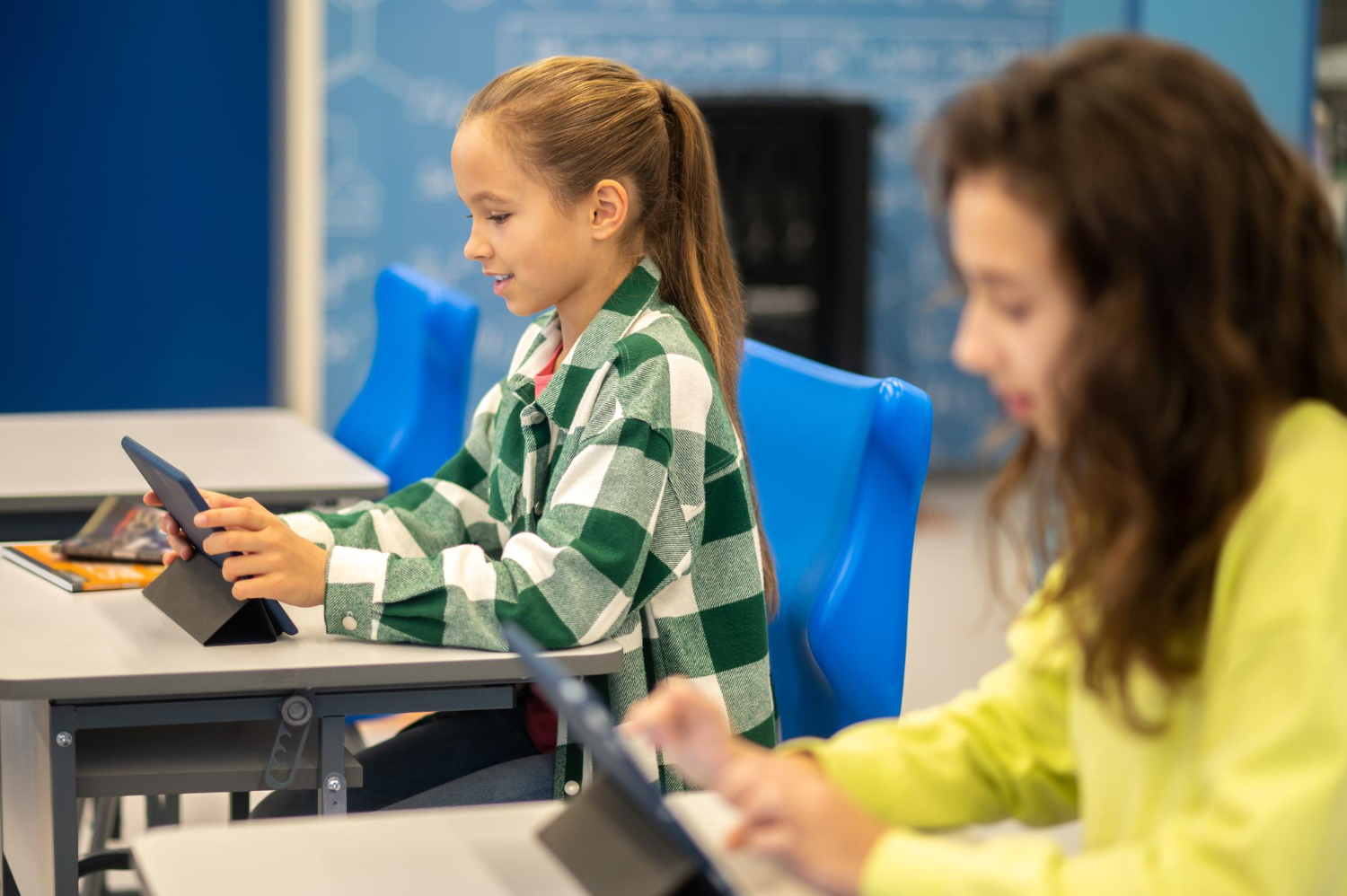A Guide to Instructional Tools for the Modern Classroom
The world of EdTech is exciting and dynamic, having the capability to engage students in the learning process like never before while also enabling teachers to customize lessons per learner and track students' progress. Even so, when faced with the ever-changing array of innovative technologies, it's easy for school leaders to reach for the newest shiny "solution" and end up squandering money on tech that they don't really need.
Investing in the wrong technology too quickly can not only impact the classroom negatively but can also result in financial losses. In fact, according to a recent survey, the hidden costs of implementing ineffective technologies can be as high as $220 per student.
That said, while school districts, private schools, and universities have already invested in dozens of apps/learning tech solutions, if they want to maximize the ROI of EdTech, they need to channel their investment in technologies that optimize both the teaching and learning experience.
One such technology is the screen mirroring solution. Besides allowing the entire class to engage with the app, screen mirroring technology also facilitates a more personalized teaching process –the teacher can use specific apps with some students and use different apps with other students for better engagement.
In this post, we'll walk you through all you need to know about EdTech and how you can maximize the ROI of EdTech in the classroom.
Variances in Engagement Based on Grade
While engagement has broadly dipped from this time five years ago, it's also helpful to understand the differences between grade levels. The annual engagement survey points to one significant trend: elementary student engagement is much higher than that of older students. Even though it's difficult to pinpoint the explicit reasons why, it's clear that older students are much more disengaged than their younger counterparts. Some educational experts even refer to this as the "School Engagement Cliff," which gets more pronounced as students close in on graduating high school.
This divergence should also impact how we bring new EdTech tools into the classroom. Although it's still important to introduce new tech into elementary schools as well, the numbers suggest there is more ground to be gained with more advanced students. High schoolers who are accustomed to being on their personal devices need to feel that the classroom is an extension of their own digital world. Through easy-to-use EdTech platforms, teachers have a significant opportunity to reengage disaffected students by providing a tech-enhanced comfort zone.
EdTech Tools That Create a More Dynamic and Collaborative Classroom
Although the acute pressures of the pandemic have eased, that doesn't mean there will automatically be a reversal in student engagement and participation. The influential annual survey wasn't the only one that showed engagement was already declining before the pandemic; other prominent studies point out that falling engagement was a problem at least as far back as 2018. To improve this trend, proactive measures need to be taken by educators who are committed to improving participation and all-around engagement.
RELATED: 8 Reasons Screen Mirroring is an Essential Resource for Improving Student Learning with Technology
With EdTech growing into an age of maturity, administrators need to find the best path forward for students and teachers alike. Based on metrics like enhancing SEL learning, increasing collaboration, and creating a more seamless learning environment, here are three types of EdTech tools that can have a positive impact.
Interactive Whiteboards
Digital whiteboards offer an excellent entry to the world of EdTech, combining the classic whiteboard of yesterday with today's endlessly adaptable digital landscape. The beauty of using whiteboards is the ease of encouraging collaboration in a fun and exciting way. Especially useful for students working together, whiteboards can help students create dynamic presentations that can engage the entire class. From everyday learning to larger projects, digital whiteboards work well with any age group or educational level.
The best EdTech platforms are also compatible with interactive whiteboards, allowing teachers to connect their whiteboards with a centralized and easy-to-control application. Agnostic visual learning solutions that work with many other applications tend to provide a significant advantage for educators using EdTech tools, specifically with interactive whiteboards. The overall simplicity tends to make interactive whiteboards a favorite among students and teachers alike.
Screen Mirroring
Simplicity and ease of use are again front and center with screen mirroring, a student-centered approach to sharing in the classroom. The basic premise here is straightforward: it's easier for students to engage and present when they can use the apps they're already using on a regular basis. With screen mirroring, students can project videos and other information directly from their personal devices to the head of the classroom (with educator permission).
This allows students to remain in their comfort zone as they connect with the entire class, a feature that is especially helpful for introverted students who have trouble interacting with their peers. It's also a completely wireless solution that allows teachers to roam at their leisure, helping them maintain control of their classroom without an inhibiting tangle of wires. Different from other prominent technologies that are consumer-first in orientation, screen mirroring is designed with the classroom in mind and works well across any subject or level.
Screen mirroring is also a favorite of education IT experts, and the right platform works with any digital screen already installed in a classroom. The ease and convenience significantly decreases the learning curve, allowing teachers to begin using it as soon as it becomes available with minimal or no training sessions. For educators hoping to make a significant improvement to the classroom without having to completely overhaul the tech infrastructure already in place, screen mirroring can be a tremendous asset.
Social and Collaborative E-Learning Platforms
The importance of balancing social development with traditional learning is becoming more and more apparent. To improve social learning while simultaneously keeping students on course academically, there are many apps that aim to supplement the curriculum. Some of the top options in this realm offer enhanced face-to-face virtual learning, improved remote mentoring, and online forums that make it easy for students to check in with their peers.
These types of EdTech tools help to reinforce classroom lessons with a focus on social learning. Especially helpful for students who have difficulty collaborating in a classroom setting, social-learning apps create a supportive, fun, and interactive community that can prime the student for the classroom. Students can participate in interactive sessions that are social in nature (e.g., ordering at a restaurant) or play games that directly apply to the classroom curriculum.
There are also apps that aim to improve overall SEL, with extra emphasis on the emotional aspect that can be a driver of student behavior. Although there are apps available for any student level, there are particularly helpful options for younger students just learning to control their emotions and assimilate socially. These types of apps can be particularly helpful for students who are trying to overcome trauma, whether its trauma stemming from the pandemic or other factors. Per the Education Development Center, assisting students in improving their SEL skillset is a critical way of helping students get back on track following raised levels of trauma.
Educational Games and E-Learning Quizzes
The best teachers have always found ways to make learning fun, but today's educators have a leg up on their predecessors. Although teachers need to be wary of the gamification of education to an unhelpful degree, educational games can create an energetic, collaborative atmosphere in a classroom setting. Helpful for students of any age, e-learning games can be an excellent way to reinforce a subject or lesson while encouraging participation from as many students as possible.
Related: From Simple Projection to Complex Projects – How Vivi Delivers So Much More Than Just Wireless Screen Mirroring
The same basic premise supports the implementation of e-learning quiz apps in the classroom. Basic quiz formats are still vitally important in most situations, but today's quiz apps can provide a nice change of pace for students. The best apps can turn basic lessons into fun, interactive quizzes that can supplement the learning experience. There is also an extraordinary range in the types of e-learning quizzes offered these days, allowing teachers to find the format that works best for a given subject or student populous.
Keeping the Teacher Experience in Mind When Implement E-Learning Tools

The student is and always will be the focal point of EdTech, with all efforts culminating in an improved learning experience for students from all backgrounds. But one way to ensure that a school's technology is maximizing its potential is by providing a tech infrastructure where teachers can thrive as well. Studies even show a direct link between educator engagement and the student experience, providing ample incentive to keep educators engaged when implementing EdTech tools.
While studies show that administrators tend to choose digital tools based on improving overall performance and justifying costs, teachers are much more student-focused. Teachers prefer digital tools that are conducive to student engagement and personalization, stressing the importance of being able to customize around the needs of the individual students. For the teachers tasked with directly reaching students, there is no substitute for digital platforms that align with their mandate.
This is why it is critical to remain focused on implementing tech platforms that directly assist a teacher's ability to reach their students, which isn't always guaranteed as administrators also have to consider the larger numbers game. Coming out of the pandemic, teachers have roughly double the average stress level of other adults, with much of that stress stemming directly from worrying about students and the overall work environment.
As schools onboard new EdTech platforms, it's critical to revert back to the fundamental experience of teachers charged with using the new digital tools. While schools battle high levels of teacher dissatisfaction, using tech to lower daily pressure and make it easier to spark student engagement is essential.
Simplifying Tech Applications
The earliest generation of EdTech adopters were pioneers living in a world of ups and downs. While technology has long been providing new opportunities for both teachers and students alike, implementing technological solutions in the classroom has come with plenty of growing pains. An excessive amount of wires, difficult-to-integrate tech hookups, and issues with troubleshooting have made adopting EdTech anything but seamless in many situations.
But today's best EdTech doesn't just aim to improve the toolkit of educators; it aims to simplify and improve the entire process of using EdTech in the classroom. Teachers who are able to disentangle from first-generation technology and embrace wireless solutions are freed from many of the challenges of yesterday. Many teachers today are able to roam the room while accessing a wireless, centralized platform, which keeps them in control without the hassles that used to be required.
Instead of dealing with lengthy and messy setups, educators are much better positioned to focus purely on encouraging students to engage with the material and their fellow classmates. As EdTech continues to evolve, it's the teachers who are finally able to harness the full capacity of modern technology.
Fine-Tuning the Learning Process Through Technology

As we continue to develop strategies for tapping the upside of EdTech in the classroom, it helps to work within a general framework that can maintain focus on the big picture. By balancing the needs of teachers and students, we can help create a more collaborative and inclusive educational space than previous generations could have ever imagined. Using EdTech is also going to be a work in progress that will constantly improve, requiring educators to fine-tune their approach as we discover more about the relationship between students and e-learning technology.
In an effort to improve the integration of e-learning tools, McKinsey devised three general principles that can provide a helpful lens to view education. Although the approach is designed to guide higher education, there is substantial overlap with the principles promoted by the Office of Educational Technology, which aims to guide the youngest e-learners. Combined we have an inclusive set of guidelines that can help any administrator devise the best path forward for implementing EdTech.
Creating a 'Seamless Journey' for Students
One of the fundamental components of adding e-learning tools to the mix is making the journey as cohesive and seamless as possible. Although technological issues are to some extent unavoidable, educators should focus on implementing EdTech that is easy to use and reflects the world students inhabit outside of the classroom. In other words, EdTech should feel like a natural extension of the technology they're already comfortable with. Hiccups to connecting to e-learning platforms can be detrimental to any level of education.
To ensure this is possible, working with education-first platforms that integrate with a variety of other e-learning tools is paramount. Platforms that are more prohibitive, ones that only work with certain apps, can cause disruptions and ultimately limit the possibilities of classroom EdTech. By working with versatile platforms that are conducive to this approach, educators will have an advantage in maintaining high levels of student participation.
Remain Focused on Engagement by Offering Options
We already know that encouraging student engagement is critical, but how does a school district do this on a large scale? The keys to success seem to correspond with personalization and versatility. Schools that can offer a range of e-learning tools can increase their chances of creating a comfort zone for students. Within the classroom, this might mean screen mirroring that simplifies participation; outside the classroom, it might mean on-demand learning apps that align with curriculum goals.
This also corresponds with one of the biggest opportunities that the e-learning era brings to the table. While traditional education was – since time immemorial – a straightforward arrangement between educator and student, this dynamic has significantly shifted. Educators no longer have to be pigeonholed by a linear relationship, as a diverse slate of e-learning systems offers support that wasn't previously available. Because students are already used to the constant change that technology brings, educators who are fluid in their approach can also adapt to whatever trends come next.
By embracing platforms that are highly adaptable, educators can take full advantage of the EdTech offerings of both today and tomorrow. The result is a much easier time generating and sustaining student engagement by providing as many options as possible. With technology that can grow as the industry shifts, educators remain in control no matter what comes next.
Constructing Networks Built to Handle Emotional Needs of All Students
Former generations could be forgiven for not understanding the impact of SEL, but those days are now behind us. E-learning platforms can be ideal partners in helping to encourage all forms of learning, including the critical aspects of social instruction that were not prioritized in earlier eras. By focusing on inclusivity and SEL, teachers can provide critical support that goes beyond the basics of the curriculum.
This can be especially important when utilizing tools that help students share their personal experiences, as this can lead to cultural breakthroughs that can reverberate around the classroom. As the Office of Educational Technology notes, using technology to share personal stories can increase "the amount of diverse, culturally relevant, and community-based content in the classroom." This cultural exchange, facilitated by easy-to-use technology, can be an important way for all students to have their voices heard.
This type of inclusivity can, in turn, have a significant impact on the psyche of a student. While many students struggle to verbally present their personalized stories in a classroom, an assist from the right e-tool can make it effortless to share a video or other material. Making SEL progress can be much more manageable with this type of user-friendly digital infrastructure, ensuring that everyone has a voice in the classroom.
The same mentality can also be a tremendous boon for students with disabilities or for those who are overcoming language barriers. By being able to easily present to the classroom with the assistance of technology, students who otherwise might fall behind can be positioned to thrive alongside their peers. While technology will never be a cure-all for inclusivity, today's best options provide a much better roadmap to success – one that can be extrapolated to all grades of education.
Elevating Your Classroom with Adaptable EdTech
The impact of e-learning instructional tools in the classroom ultimately comes down to how teachers and administrators use them to their advantage. While the best resources open an assortment of options for tailoring the material to students, more reductive learning tools can form barriers that can be difficult to penetrate. Ultimately, by providing as many paths forward for students as possible, teachers can maximize the potential of EdTech and encourage student engagement at all turns.
Platforms that allow for an expansive application of available tools can then become an invaluable component of the modern education system. Tossing aside more rigid systems that are not education-first, the educator can generate an inclusive atmosphere where learning is fun, barriers are easy to overcome, and students can grow their confidence alongside their expanding knowledge base. With the continued importance of SEL and giving voice to all, technology has the ability to provide the support system teachers need to help students flourish.
Vivi's versatile, agnostic software solution can help any school district upgrade by seamlessly integrating with current tech infrastructure. For more on how tools like wireless screen mirroring provide an essential boost of engagement in your classroom, contact Vivi today to get started.
